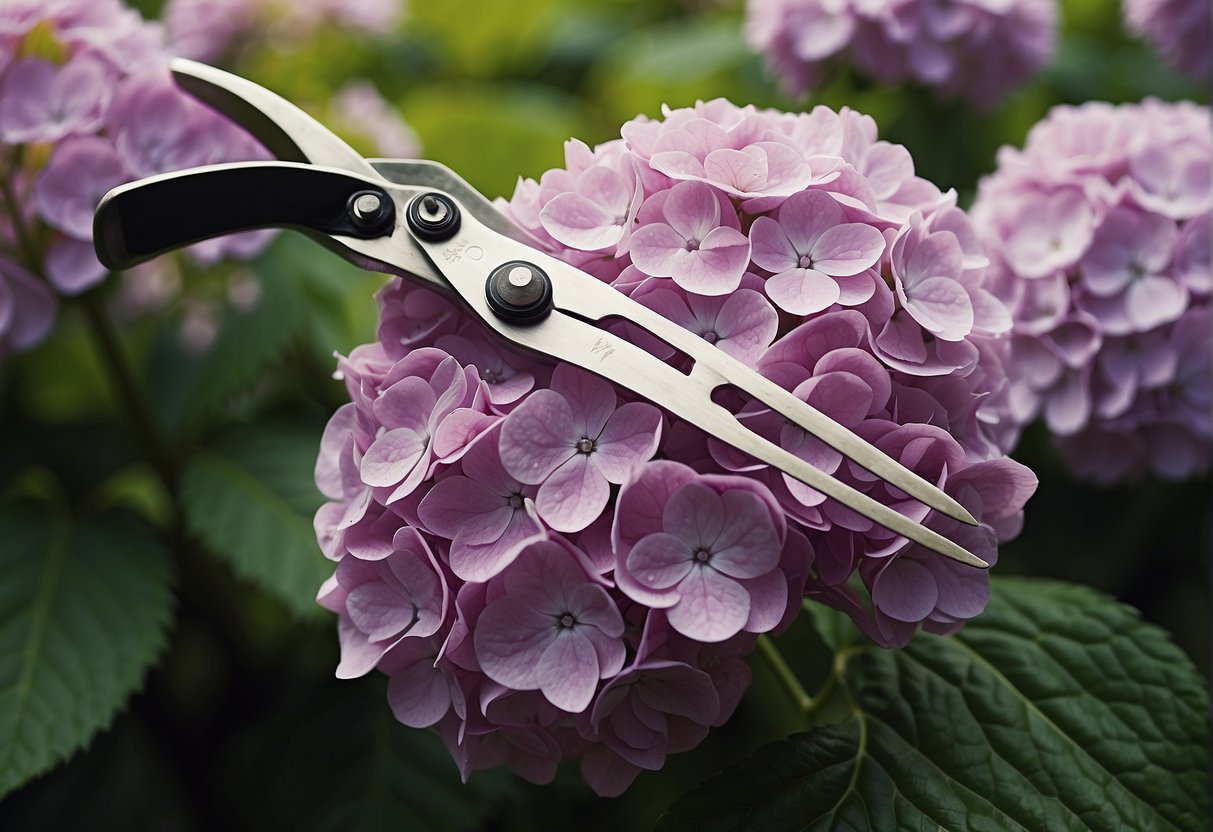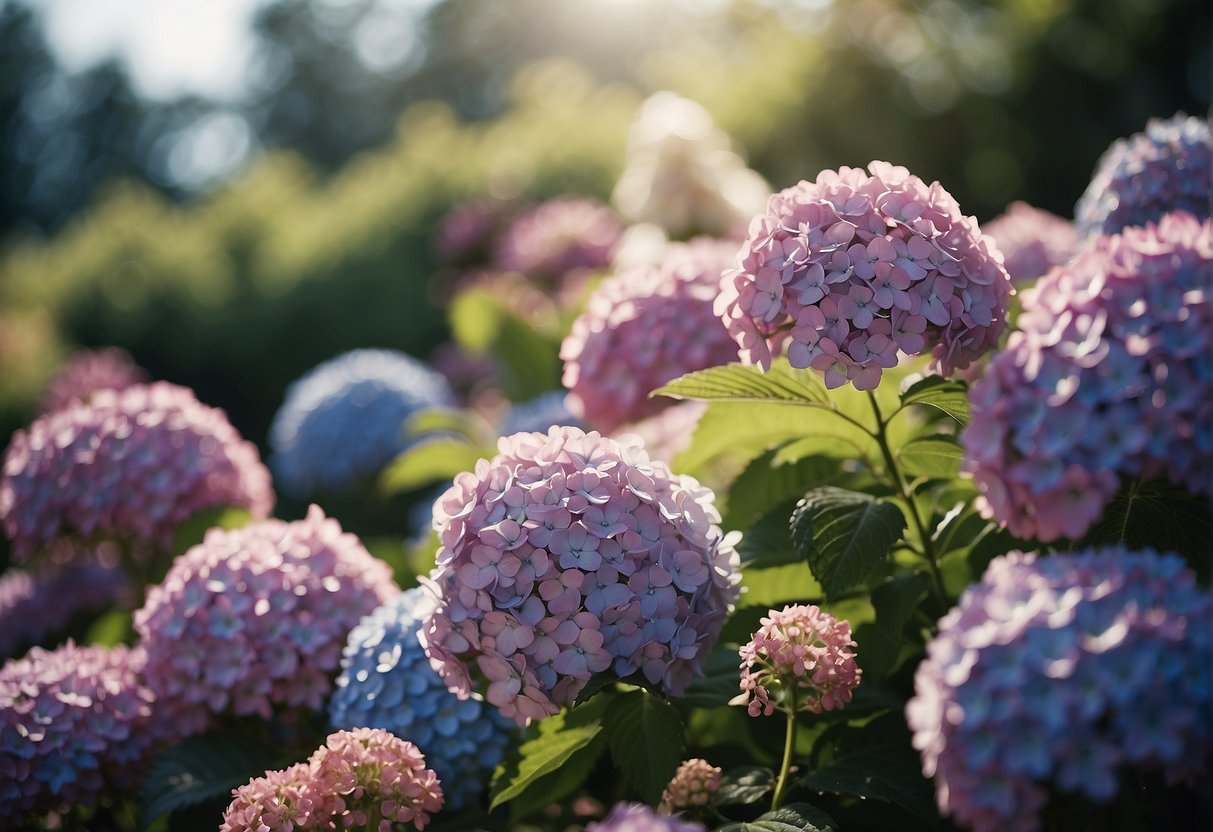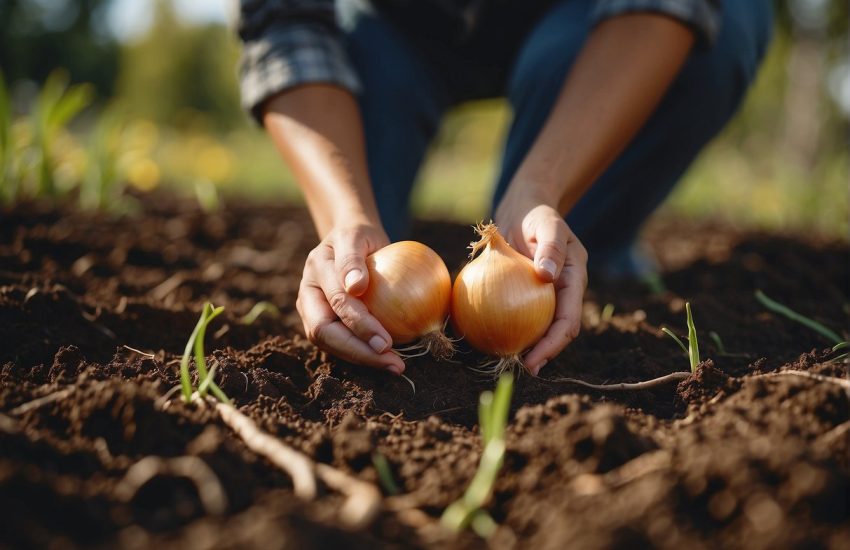How to Deadhead Hydrangeas: A Step-by-Step Guide
Hydrangeas are a popular flowering plant that can add a beautiful touch to any garden or landscape. Deadheading is an important task that can help hydrangeas to bloom more fully and look their best. Deadheading is the process of removing spent flowers from a plant, which encourages it to produce more blooms and prevents it from wasting energy on producing seeds.
Deadheading hydrangeas is a simple task that can be done with just a few basic tools. To deadhead hydrangeas, you will need a pair of sharp pruning shears or scissors, a bucket or bag to collect the dead flowers, and a good understanding of the plant’s growth habits. It is important to deadhead hydrangeas regularly throughout the growing season to keep them looking their best and to encourage more blooms. With the right techniques and a little bit of patience, anyone can learn how to deadhead hydrangeas and enjoy a beautiful, thriving garden.
Understanding Hydrangeas

Hydrangeas are a popular flowering shrub that can add a splash of color to any garden. They are known for their large, showy blooms that come in a variety of colors, including pink, blue, white, and purple. In this section, we will take a closer look at the different types of hydrangeas and their growth cycle.
Types of Hydrangeas
There are several different types of hydrangeas, each with its own unique characteristics. The most common types include:
- Mophead Hydrangeas: These hydrangeas have large, round flower heads that resemble pom-poms. They are known for their vibrant colors and are often used in floral arrangements.
- Lacecap Hydrangeas: These hydrangeas have flat flower heads with a ring of larger flowers around the edge and smaller flowers in the center. They are often used as border plants or in mass plantings.
- Oakleaf Hydrangeas: These hydrangeas have large, oak-shaped leaves and cone-shaped flower heads. They are known for their fall foliage and are often used as a specimen plant.
- Panicle Hydrangeas: These hydrangeas have cone-shaped flower heads that are made up of smaller flowers. They are known for their long-lasting blooms and are often used in dried flower arrangements.
- Smooth Hydrangeas: These hydrangeas have large, flat flower heads and are often used as a ground cover or in mass plantings.
- Mountain Hydrangeas: These hydrangeas have smaller flower heads and are often used in rock gardens or as border plants.
Hydrangea Growth Cycle
Hydrangeas have a unique growth cycle that can vary depending on the type of hydrangea and the climate. In general, hydrangeas will begin to grow new leaves and stems in the spring. As the weather warms up, they will begin to produce buds, which will eventually turn into flowers.
It is important to note that some hydrangeas bloom on old wood, while others bloom on new wood. This means that pruning at the wrong time can result in a loss of blooms. Mophead and lacecap hydrangeas, for example, bloom on old wood, so they should be pruned immediately after they finish blooming in the summer. Panicle and smooth hydrangeas, on the other hand, bloom on new wood, so they can be pruned in the late winter or early spring before new growth begins.
By understanding the different types of hydrangeas and their growth cycle, gardeners can ensure that their hydrangeas thrive and produce beautiful blooms year after year.
The Basics of Deadheading
Deadheading is a simple gardening technique that involves removing spent flower heads from plants. In the case of hydrangeas, deadheading can help promote healthy growth and encourage the development of new blooms.
What is Deadheading?
Deadheading is the process of removing spent flowers from a plant. When flowers begin to fade and wilt, they stop producing energy and start to focus on seed production. By removing these spent flower heads, the plant can redirect its energy towards new growth and the development of new buds. This can help promote healthy growth and encourage the plant to produce more blooms.
Benefits of Deadheading Hydrangeas
Deadheading hydrangeas can offer several benefits. Firstly, it can help promote healthy growth and encourage the development of new buds. This can lead to more blooms and a fuller, more vibrant plant. Additionally, deadheading can help prevent disease by removing spent flowers that may be harboring harmful bacteria or fungi. Finally, deadheading can help prevent seed production, which can be important for certain types of hydrangeas that are prone to self-seeding and spreading rapidly.
To deadhead hydrangeas, simply use a pair of sharp garden shears to cut off the spent flower heads. Be sure to cut the stem just above a set of healthy leaves or buds, as this will encourage new growth and help prevent damage to the plant. Deadheading can be done throughout the growing season as needed, but it is especially important in the late summer and early fall when hydrangeas are at their peak.
Overall, deadheading is a simple and effective way to promote healthy growth and encourage the development of new blooms in hydrangeas. By removing spent flowers, gardeners can help redirect the plant’s energy towards new growth and prevent the spread of disease. With a little bit of care and attention, hydrangeas can thrive and produce beautiful blooms year after year.
Deadheading Techniques
When to Deadhead
Deadheading hydrangeas is important to promote new growth and encourage the plant to produce more flowers. The best time to deadhead hydrangeas is after the flowers have started to fade and turn brown. This is usually in late summer or early fall, depending on the variety of hydrangea.
How to Deadhead
To deadhead hydrangeas, start by removing the spent flowers with pruning shears or secateurs. Make sure to cut just above a healthy set of leaves or buds to encourage new growth. It is important to make a clean cut with bypass pruning shears to avoid damaging the stem. If the stem is too thick to cut with pruning shears, use a hand saw.
Tools for Deadheading
When deadheading hydrangeas, it is important to use the right tools to ensure a clean cut. Bypass pruning shears are recommended over anvil pruning shears, as they make a cleaner cut. It is also important to wear gardening gloves to protect your hands from thorns and other sharp objects. Before using your tools, it is a good idea to disinfect them with denatured alcohol to prevent the spread of disease.
Seasonal Deadheading Guide

Deadheading in Spring and Summer
Deadheading is the process of removing spent blooms from hydrangeas to promote new growth and encourage reblooming. Deadheading in spring and summer is essential for maintaining a healthy and beautiful hydrangea plant. This process should be done regularly, especially during the blooming season.
To deadhead hydrangeas, simply cut off the spent blooms with a pair of sharp pruning shears. Make the cut just above the first set of healthy leaves, leaving about a quarter inch of stem. This will prevent damage to the new growth and ensure that the plant continues to produce healthy blooms throughout the year.
Preparing for Winter: Deadheading in Fall
Deadheading in fall is crucial for preparing hydrangeas for winter. As the temperatures begin to drop and frost sets in, it’s important to remove any dried flowers and spent blooms from the plant. This will help prevent disease and protect the plant from the harsh winter weather.
For panicle and smooth hydrangeas, deadheading can be done in late winter or early spring before new growth begins. This will promote healthy growth and ensure that the plant produces beautiful blooms during the blooming season.
In colder climates, deadheading in mid to late fall is recommended to prepare the plant for the winter months. This will help protect the plant from frost and promote healthy growth in the spring.
Overall, deadheading is an essential part of hydrangea care. By following these seasonal deadheading tips, you can ensure that your hydrangea plant remains healthy and beautiful year after year.
Hydrangea Health and Maintenance

Pruning vs. Deadheading
Hydrangeas are a beautiful addition to any landscape, but they do require some maintenance to thrive. One question that many gardeners have is whether they should prune or deadhead their hydrangeas. While both methods involve removing parts of the plant, they serve different purposes.
Pruning is the process of cutting back branches and stems to control the size and shape of the plant. This is typically done in late winter or early spring before new growth begins. Deadheading, on the other hand, is the process of removing spent flowers to encourage the plant to produce new blooms.
If you want to promote longer stem growth and larger flower buds, deadheading is the way to go. This is especially important for the popular white, pink, and blue varieties, as well as the Endless Summer hydrangea. By removing dead flowers, the plant can redirect its energy towards producing new growth and blooms.
Disease Prevention and Care
Keeping your hydrangeas healthy is key to producing beautiful blooms year after year. One way to do this is by preventing diseases and infections. Proper watering and fertilization are important, but there are other steps you can take as well.
For example, make sure to plant your hydrangeas in an area with well-draining soil and plenty of sunlight. This will help prevent root rot and other issues. Additionally, smooth hydrangeas are less prone to producing seeds, which can attract pests and lead to infection.
If you do notice signs of disease or infection, it’s important to act quickly. Consult a plant expert or local nursery for advice on the best course of action. By taking care of your hydrangeas and preventing disease, you can ensure that they thrive and provide winter interest in your backyard.
Enhancing Your Garden’s Aesthetics
Deadheading hydrangeas is not only essential for the health of the plant, but it can also enhance the aesthetics of your garden. By removing spent blooms, you can encourage the plant to produce new growth and more blooms, resulting in a fuller and more vibrant display.
Regular deadheading can also help to extend the bloom period of your hydrangeas, providing you with more flowers for bouquets and adding color to your landscape. Additionally, by removing dead or damaged blooms, you can improve the overall appearance of your garden and backyard.
In the winter months, hydrangeas can provide interest to your garden even after the blooms have faded. By leaving the dried flower heads on the plant, you can create an attractive winter display. Alternatively, you can remove the blooms and use them in dried flower arrangements or wreaths.
Overall, deadheading hydrangeas is a simple but effective way to enhance the beauty of your garden and improve the health of your plants. By following the proper techniques and incorporating it into your regular gardening routine, you can enjoy a stunning display of blooms and a more visually appealing landscape.
Frequently Asked Questions

What is the proper technique for deadheading hydrangeas to encourage new growth?
The proper technique for deadheading hydrangeas is to cut the spent blooms just above the first set of healthy leaves below the flower head. This will encourage new growth and promote bushier plants.
Is there a specific time of year that is best for deadheading mophead hydrangeas?
The best time to deadhead mophead hydrangeas is immediately after they finish blooming. This is typically in late summer or early fall, depending on the climate.
What are the steps to deadhead panicle hydrangeas correctly?
To deadhead panicle hydrangeas, simply cut the entire flower head off just above the first set of healthy leaves below the bloom. This will encourage new growth and promote a fuller plant.
How can you tell when it’s time to deadhead Limelight hydrangeas?
Limelight hydrangeas should be deadheaded as soon as the blooms start to fade and turn brown. This is typically in late summer or early fall.
Where should you make cuts when deadheading hydrangeas to promote healthy plants?
When deadheading hydrangeas, it is important to make cuts just above the first set of healthy leaves below the flower head. This will encourage new growth and promote a fuller, healthier plant.
What are the best practices for pruning hydrangeas to maintain continuous blooming?
The best practices for pruning hydrangeas to maintain continuous blooming are to remove dead or damaged wood, thin out crowded branches, and cut back old wood to promote new growth. It is important to prune at the right time of year for the specific type of hydrangea, as some bloom on old wood and others on new wood.


